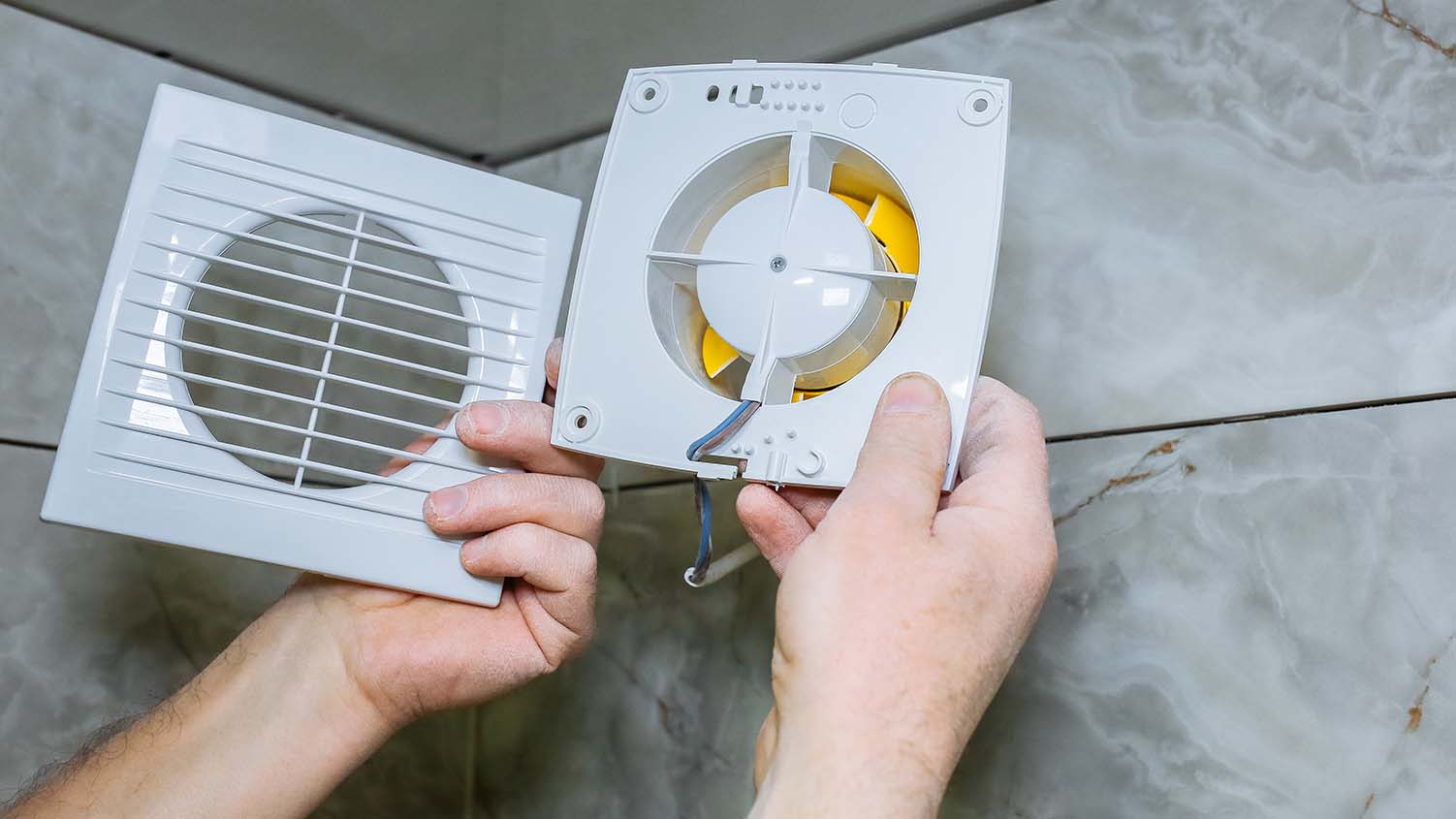Types of Bathroom Exhaust Fans: Bathroom Exhaust Fan Guide

Bathroom exhaust fan guide – Exhaust fans are essential for maintaining good air quality and preventing moisture buildup in bathrooms. There are several types of bathroom exhaust fans available in the market, each with its own advantages and disadvantages.
So, you’re looking for a bathroom exhaust fan guide? Good choice! A good exhaust fan can make a big difference in keeping your bathroom fresh and free of moisture. But while you’re at it, why not add a touch of Lana Del Rey to your bathroom decor?
Check out this lana del rey wallpaper ! It’s the perfect way to add a bit of style to your bathroom while also keeping it functional. And don’t forget, a good exhaust fan will help prevent mold and mildew from growing in your bathroom, so it’s a win-win!
Axial Fans
Axial fans are the most common type of bathroom exhaust fan. They are relatively inexpensive and easy to install. Axial fans work by drawing air in from the front of the fan and expelling it out the back. They are best suited for small to medium-sized bathrooms.
Yo, check this out! I’ve been struggling with this bathroom exhaust fan for days, but I finally found a guide that’s got me covered. And while I’m at it, have you seen the twice wallpaper ? It’s so cute! Anyway, back to the fan guide.
It’s got all the tips and tricks you need to keep your bathroom smelling fresh and clean. So, if you’re like me and your bathroom fan is driving you nuts, this guide is a lifesaver.
Centrifugal Fans
Centrifugal fans are more powerful than axial fans and can move more air. They are also more expensive and difficult to install. Centrifugal fans work by drawing air in from the sides of the fan and expelling it out the top. They are best suited for large bathrooms or bathrooms with high humidity levels.
Mixed-Flow Fans
Mixed-flow fans are a combination of axial and centrifugal fans. They offer the advantages of both types of fans, such as high airflow and relatively low noise levels. Mixed-flow fans are best suited for medium to large bathrooms.
Key Features and Considerations

When choosing a bathroom exhaust fan, it’s like finding the perfect sidekick for your bathroom. You want one that’s efficient, quiet, and stylish, right? Let’s dive into the key features to consider:
CFM Rating: Size Matters
CFM (cubic feet per minute) measures how much air the fan can move. It’s like the exhaust fan’s superpower. A higher CFM means it can suck out more air, which is crucial for larger bathrooms or those with high humidity. Use this formula to calculate the CFM you need: Bathroom Length x Width x Height x 0.1.
Noise Level: Peace and Quiet, Please, Bathroom exhaust fan guide
Nobody wants a noisy fan that drowns out your shower tunes. Look for fans with a lower sone rating, which indicates quieter operation. Aim for fans with a sone rating below 2.5 for a peaceful bathroom retreat.
Energy Efficiency: Save Money, Save the Planet
Choose fans with the ENERGY STAR label to save on energy bills and help the environment. They’re like the superheroes of energy efficiency, using less electricity without sacrificing performance.
Aesthetics: Style with Substance
Don’t settle for a fan that looks like a drab appliance. Modern fans come in various designs, colors, and finishes to complement your bathroom’s decor. Find one that matches your style and makes your bathroom look fabulous.
| Feature | Fan Model A | Fan Model B | Fan Model C |
|---|---|---|---|
| CFM Rating | 110 | 150 | 200 |
| Noise Level (sones) | 1.5 | 2.0 | 2.5 |
| Energy Efficiency | ENERGY STAR | ENERGY STAR | Non-ENERGY STAR |
| Aesthetics | Modern, sleek design | Traditional, white finish | Retro, chrome accents |
Installation and Maintenance
Installing a bathroom exhaust fan is a straightforward process that can be completed in a few hours. However, it’s important to follow the manufacturer’s instructions carefully and take the necessary safety precautions.
Before you begin, turn off the power to the bathroom at the circuit breaker. Then, gather the tools and materials you’ll need, including a screwdriver, drill, wire cutters, and duct tape.
Once you have everything you need, you can begin the installation process.
1. Choose a location for the fan. The fan should be installed in the ceiling or wall of the bathroom, as close to the shower or bathtub as possible.
2. Cut a hole for the fan. The size of the hole will vary depending on the model of fan you’re installing. Use a drill to cut a hole that is slightly larger than the fan housing.
3. Wire the fan. Connect the fan’s wires to the electrical wires in the ceiling or wall. Make sure to match the colors of the wires (black to black, white to white, and green to ground).
4. Install the fan. Insert the fan into the hole and secure it with screws.
5. Connect the ductwork. Attach the ductwork to the fan and run it to the outside of the house. The ductwork should be sized according to the manufacturer’s instructions.
6. Turn on the power. Once the fan is installed, turn on the power at the circuit breaker and test the fan to make sure it’s working properly.